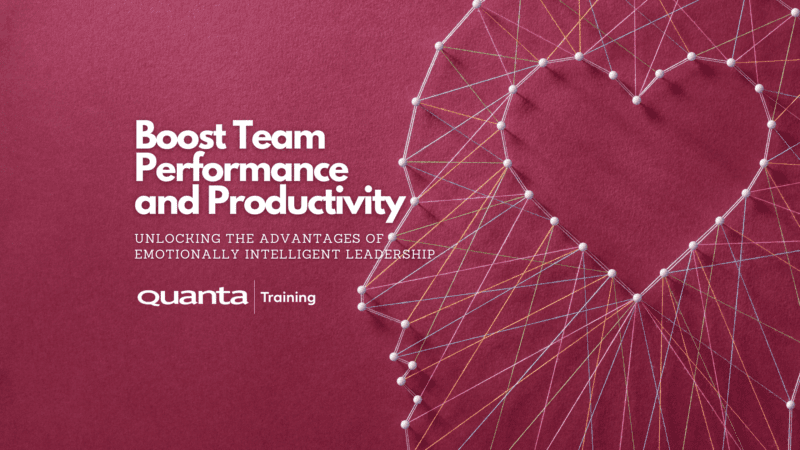Registered Scrum Master@Scale
Course Code: CLAAGIL6517


Optimize communication between leadership and teams, bolstering collaboration & throughput.
Operating effectively across multiple teams demands a diverse skill set encompassing leadership, analytics, and interpersonal communication. This course is designed to equip you with the necessary tools to excel in such a role and cultivate highly productive teams on a larger scale. Originally outlined in the Scrum Guide, Scrum was initially intended for single-team endeavours but has since evolved to encompass complex products, processes, and systems requiring the collaboration of multiple teams. Enter Scrum@Scale, tailored to efficiently coordinate this new ecosystem through a "minimum viable bureaucracy" and a "scale-free" architecture.Book a Private Event
If you require the content of this event tailored or have around 7 or more people to train it maybe better for you to host a Private Event, please get in touch to discuss this.
Get in touchDescription
You will learn how to
- Operate Scrum@Scale effectively and the role of the Scrum of Scrums
- Satisfy the Team Process component with scaled versions of the Scrum accountabilities, events, and artifacts
- Reduce the number of communication pathways within the organization so that complexity of communication overhead is limited
- Coordinate the teams’ delivery with the Product Owners Team’s release plans
- Systematically derive metrics that inform data-driven decisions and process improvements
Prerequisites
You will need to have attended and hold the Registered Scrum Master & Scrum@Scale Practitioner qualifications to be eligible to attend this courseInstalling an Agile Operating System
- Explain the importance of starting with a Reference Model
- Describe the elements of a Minimum Viable Bureaucracy (MVB), including the Executive MetaScrum (EMS) forum, Scrum of Scrums, and Executive Action Team (EAT)
- Create an agile operating system including corporate operational rules, procedures, and guidelines to enable agility
- Recognize that the Project Management Office (PMO) does not have to disappear in an Agile Transformation
- Assess an organization’s readiness and capabilities in order to prepare the organization for change
- Coordinating the Product Owner and Scrum Master Cycles
Understanding the Scrum of Scrums
- Define the Scrum of Scrums
- Describe how a Scrum of Scrums functions like a Scrum Team with scaled versions of the Scrum Accountabilities, Events and Artifacts
- State the recommended pattern (Mitosis) for avoiding the slow down caused by adding people to a team
- Provide examples of how a Scrum of Scrums integrates into a larger organizational context.
Scaling the Sprint Retrospective
- Identify opportunities for improving cross-team coordination and delivery.
- Develop hypotheses and experiments for improving the working process of the network of teams
Scaled Daily Scrum
- Communicate the required attendees for the Scaled Daily Scrum
- Identify the minimum number of participants given a specific Scrum of Scrums
- Explain the purpose of the Scaled Daily Scrum
- Demonstrate how to effectively facilitate a Scaled Daily Scrum
Scaling the Sprint Planning and Sprint Review events
- Explain that the purpose of the Scaled Sprint Planning and Sprint Review is
- Demonstrate the role of the Scrum of Scrums Master
- Understand the Scrum of Scrums Master role in the MetaScrum, Scaled Sprint, Planning and Refinement.
Role of the Scrum of Scrums Master (SoSM)
- What is the role of a Scrum of Scrums Master
- Articulate the accountabilities of the Scrum of Scrums Master in Scaled Events
- Identify possible outcomes and attributes of increased effectiveness of the Scrum of Scrums
Owner Team’s release plan.
- Determine methods for making impediments, process improvements, and delivery progress visible to the organization.
- Facilitate the prioritization and removal of impediments, paying particular attention to cross-team dependencies.
- Describe how the Scrum of Scrums (SoS) pattern scales to a Scrum of Scrum of Scrums (SoSoS) when the network of teams reaches a critical mass
- Explain that it is the responsibility of the SoSM to work with the organization to establish and track key process metrics
Scrum Master Cycle
- Identify the seven components of the Scrum Master Cycle and how the Scrum Master@Scale supports each component in service of value delivery.
Metrics and Transparency
- Articulate the goals of having metrics and transparency.
- Explain the benefits of baselining metrics and capabilities at the start of the agile implementation
- Provide example metrics for at least the following four lenses: Productivity, Value Delivery, Quality, and Sustainability
Continuous Improvement and Impediment Removal
- Reframe impediments as opportunities for improvement
- Describe what to do with impediments that cannot be resolved by the teams
- Describe the value of sharing and standardizing successful process improvements across teams
- State the importance of prioritizing impediments and rapid impediment remediation
- Assess common pitfalls of impediment prioritization and impediment resolution and identify techniques for mitigating them
Cross-Team Coordination
- Identify different methods for coordinating across teams and function areas in an agile organization
- Recognize cross-team dependencies before they become impediments
- Specify ways to effectively maintain alignment of team norms and guidelines for consistent output
Delivery
- Define the Scrum of Scrums (SoS) as a single unit that is accountable for:
– releasing an integrated Product Increment at least once a Sprint
– delivering a consistent flow of valuable finished product to customers
– integrating the work of different teams into one seamless product
– delivering high-quality customer experience
– establishing and adhering to a shared Definition of Done
Executive Action Team (EAT)
- Explain what the Executive Action Team (EAT) is and why it exists
- Coach on the key accountabilities of the EAT
- The EAT’s roles within the company backlog
- Articulate who reports to the EAT
Product Release and Feedback
- Explain that the Scrum Master cycle interprets Product Release feedback in service of continuous improvement of the product delivery mechanism
Leverage Artificial Intelligence
- Utilize AI to enhance the role of Scrum Master@Scale
Additional Exam Information
Students who successfully complete the course and pass the exam will earn their Registered Scrum Master@Scale™ credential signed by the co-creator of Scrum, Dr. Jeff Sutherland.Pre-Coursework
There is no official pre-course with this course but you are advised to review the material and contents of the Registered Scrum Master and Scrum@Scale Practitioner courses.Get Started
Forget trawling through endless course catalogues – Find the training that’s right for you
Learn MoreLatest from our blog
Kanban and Agile: Bridging the Gap
Kanban and Agile: Bridging the Gap Quanta’s Kanban University Certified Trainer Steve Church explores the way in which Agile and…
Read More
How a Ballerina could move into Cybersecurity
Jason Ford, Quanta Cybersecurity and IT Trainer talks about the limitations in Cybersecurity Training courses. Jason discusses a safe and…
Read More
Boost Team Performance and Productivity: Unlocking the Advantages of Emotionally Intelligent Leadership
Quanta People Development and Leadership Trainer, Giles Collins outlines the key elements of Emotionally Intelligent Leadership and how it impacts…
Read More




